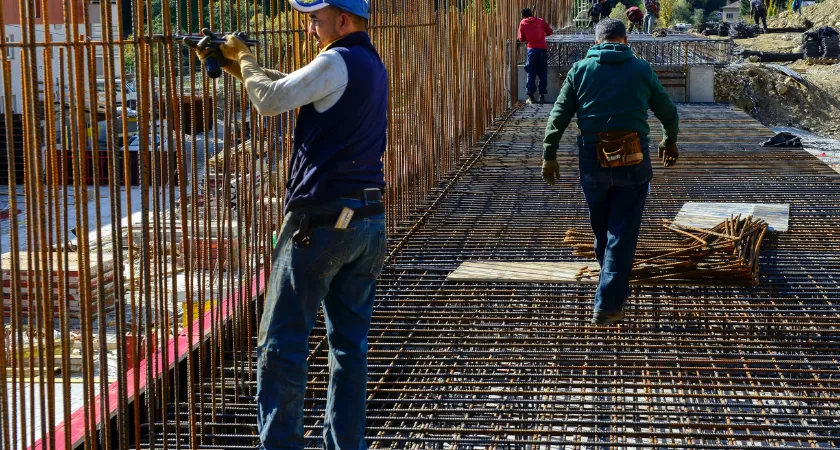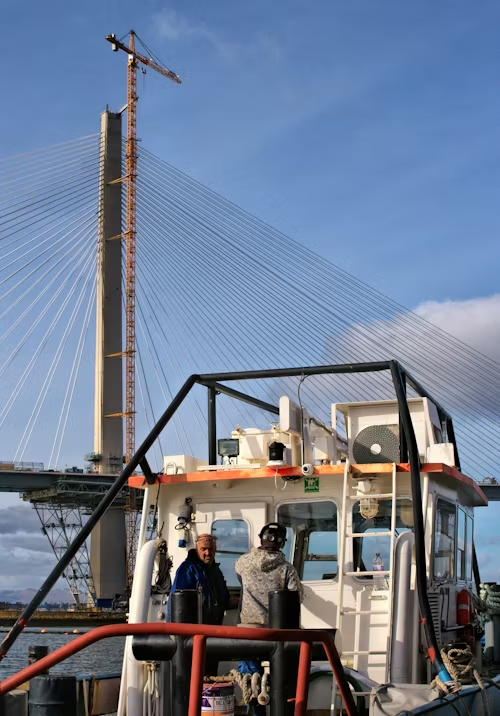
Vero Beach, Fla. — When it comes to bridges on Florida’s Treasure Coast, it turns out building something entirely new is faster—and in the long run, more durable—than fixing something old.

Residents of Indian River County are experiencing this firsthand. For more than five years, the Alma Lee Loy Bridge, which carries 17th Street across the Indian River Lagoon, has been a seemingly endless construction zone. Repairs are expected to stretch at least another 18 months, keeping drivers detouring around barricades and orange barrels well into 2027.
Meanwhile, just 20 miles south, crews working on the North Causeway Bridge have achieved in two years what the Alma Lee Loy project hasn’t in five: a functional structure spanning the water. Work began in May 2023, and according to FDOT’s Samantha Kayser, “by June 30, 2025, all bridge beams from the eastern end of the bridge were successfully installed over the waterway, marking a significant milestone in the construction process.”
By midsummer, construction workers were already walking across the skeletal frame of the new bridge—proof that Florida’s latest transportation landmark is rising at record pace.
Part of the difference comes down to lifespan. The new bridge is designed to last 75 years, compared to the 50-year lifespan of bridges built in the 1970s. “The longest beams are 182 feet and weigh 110 tons,” said Bill Stuckey, senior project engineer.
The modern structure—4,100 feet long with a sweeping curve over Highway A1A—eliminates the sharp dips and dangerous rail crossings of the old drawbridge. It rises to 85 feet, 20 feet taller than the Alma Lee Loy Bridge, offering improved clearance for boat traffic.
“It took more than five years to design the bridge, starting in 2016 and finishing in 2021, and the plan set includes more than 2,000 pages of drawings and specifications,” said Mike Sileno, the engineer of record for the project. Advances in material science, like high-performance concrete, carbon fiber reinforcement, and better anti-corrosion coatings, make the new bridge more resistant to Florida’s saltwater environment.
Older bridges, Sileno explained, often had structural parts in the saltwater “splash zone,” where waves bathed concrete in corrosive chloride. The lowest portion of the new span sits 12 feet above wave level, giving it a far better chance to endure storms.
The North Causeway Bridge is more than functional—it’s monumental. When finished, it will be one of the highest bridges on Florida’s East Coast and the first new link between island and mainland in 30 years.
The bridge will carry one 12-foot vehicle lane in each direction, plus dedicated bike lanes, sidewalks, and shared-use paths. An observation deck beneath the western end will give visitors a sweeping view of the Indian River Lagoon.

In sheer scale, the project is enormous. More than 250,000 tons of earth, steel, and concrete are being used—enough to rival a skyscraper project. Most of the massive I-beams were manufactured locally by CDS Manufacturing in Indian River County.
FDOT tapped two of the biggest names in engineering: H&H (Hardesty & Hanover), founded in 1887, as designers, and Stantec, a global engineering and architecture firm, to oversee compliance and quality. Stantec keeps a team of inspectors on-site daily, ranging from seasoned veterans to young engineers learning on the job.
General contractor Vecellio & Grogan, a fourth-generation family business with 120 years of experience, is carrying out the heavy construction. “We figured 1,357 working days to begin with, and it now looks like it will be about 1,400,” said Stuckey. “We have to be cautious, so our official timeline for the bridge opening is late next year, but we hope to have it done earlier.”
The total cost has risen from $79 million to $115 million, but compared to other projects that have doubled amid inflation, FDOT considers it a success.
While the new bridge is racing toward completion, the Alma Lee Loy Bridge continues to frustrate residents. Built in the late 1970s, it was declared structurally deficient in 2020 after critical issues were found. FDOT chose repair over replacement—saving an estimated $100 million but stretching the project timeline far beyond expectations.
By the time the Alma Lee Loy Bridge is complete—sometime around 2027—it will have taken three times longer to repair it than it did to build it originally during the Carter administration.
For drivers and cyclists in Vero Beach, that means two tales of two bridges: one moving forward at lightning pace, the other stuck in the slow lane of history.
Originally reported by Steve Thomas in Vero News.